
Nowadays, storytelling has become crucial for brands more than ever because the most successful businesses are great storytellers.
The brands that master the art of appealing to their target audience by leveraging empathy and storytelling in their marketing efforts win the trust of the potential customers, encourage action, and drive them to believe in their mission!
Copywriting and content writing are two integral aspects of storytelling and digital marketing. Both help brands develop and maintain meaningful relationships with potential and existing customers.
Irrespective of whether you’re building an in-house team or thinking of outsourcing your content marketing campaigns; it’s crucial to understand the copywriting-vs-content-writing phenomenon!
Let’s start by looking at each of these separately:
What Is Copywriting?
“When I write an advertisement, I don’t want you to tell me that you find it ‘creative.’ I want you to find it so interesting that you buy the product.”
- David Ogilvy (Advertising tycoon & Founder of Ogilvy & Mather)
The primary responsibility of a copywriter is to market and sell products as a part of an organization’s marketing campaigns.
Good copywriters focus on a short-term and direct goal with significant returns: optimizing conversions!
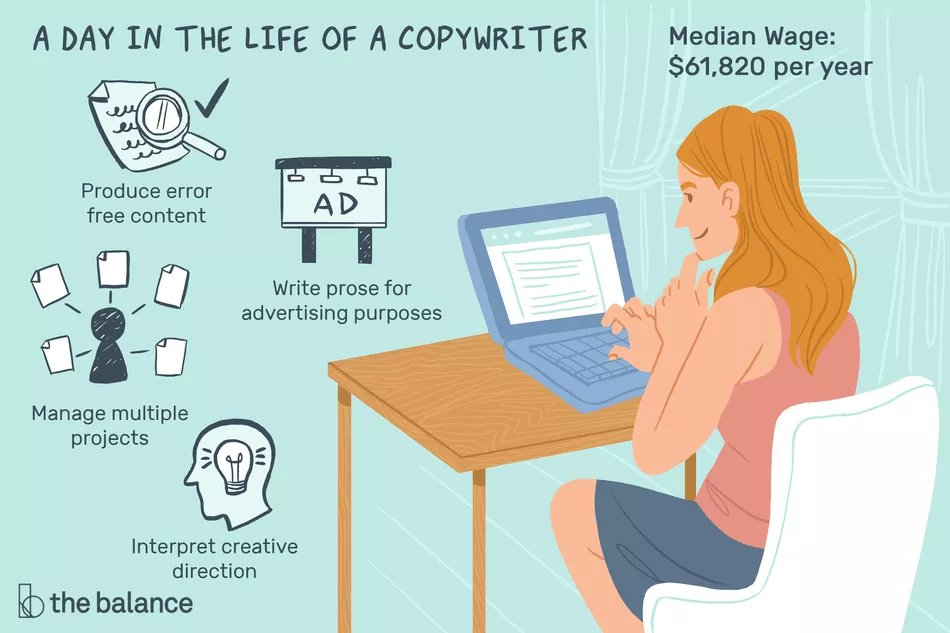
Source: The Balance Careers
Copywriters are marketers and wordsmiths proficient in writing compelling headlines, copy for online and offline ads, taglines, slogans, etc., and understand SEO fundamentals for creating well-optimized content for search.
A copywriter creates all the content with some common objectives such as:
- Prompting a customer to buy a product.
- Encouraging a potential customer to subscribe to a service or schedule a demo.
- Persuading leads to submit vital information such as their email addresses.
What Goes Into Copywriting?
You can find ample information about what copywriting is, but rarely anyone talks about what goes into copywriting or what makes excellent copy?
There are a few elements that differentiate an average copy from an impeccable one.
Let’s have a look at the factors that can take your average copy to the next level:
- Robust call-to-action (CTA)
- Persuasion
- Free from grammatical or spelling errors
- Jargon-free and no use of fancy or fluff words
- Resonating with the product/service
- Aligned with the target audience’s interest
- Use of action words for making the copy captivating
- Straightforward
- SEO friendly
7 Marketing Materials that Require Copywriting
1. Landing pages
As a successful copywriter, you must understand how to write landing page copy that converts.
From being concise to perfecting your USP and using your audience’s language to provide social proof, you should keep all these pointers in mind when creating landing page copy.
Here’s an example of an excellent landing page copy from Curata where the copy length is short, and they try to grab top-of-the-funnel leads by highlighting what the visitors get in return for submitting their details:

Source: Instapage
2. Sales Copy
Sales copy plays a significant role in grabbing potential customers’ attention, and hence while writing a sales copy, you should choose words very cautiously that help you justify your offering.
For example, Apple sales copy is a testimony of how you can engage, fascinate, and persuade customers to purchase your product with one big and beautiful headline:

Source: Neil Patel
3. Sales Letters
The primary goal of sales pages or letters is to generate new leads, drive traffic to your website to convert potential leads into paying customers, and introduce your company’s products and services to the target audience.
You should write an impeccable sales letter copy that’s crisp and highly engaging for doing all of these.
Let’s look at Agora Financial’s sales letters that create a sense of urgency, scarcity, and fear in the target audience, which is a crucial element of an ideal sales letter.
It makes customers feel like they will miss on something significant if they don’t take immediate action:
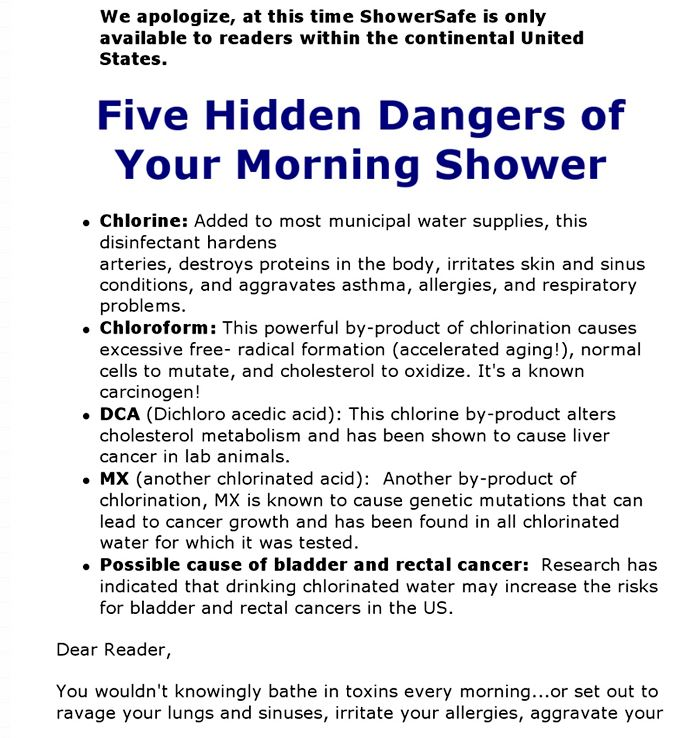
Source: Carmine Mastropierro
4. Jingles
The main attribute of a quality advertising jingle is that it sparks nostalgic feelings in the target audience’s minds and can stay there forever.
One of the most challenging tasks for a copywriter is to produce memorable jingles with appealing words that resonate with the brand’s voice.
Here are the top 10 advertising jingles of all time for your reference:
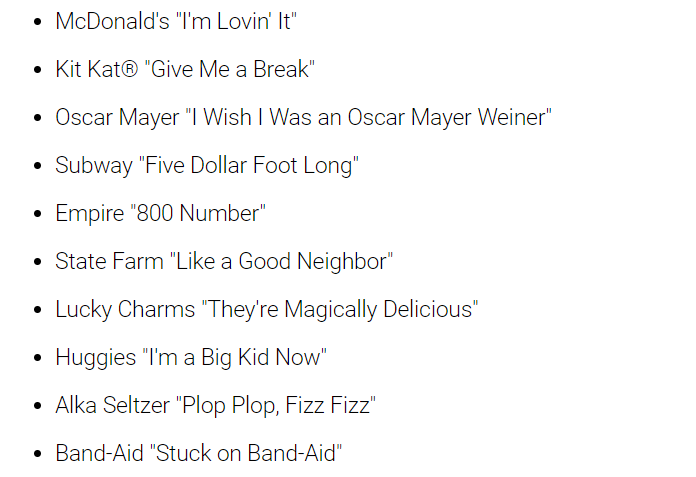
Source: Quality Logo Products
5. Ads
Copywriting for ads isn’t a piece of cake as your ads need to have a witty headline and a compelling copy for grabbing the audiences’ attention.
The copy for ads need to be clean, crisp, and engaging like the Native Deodarant’s landing page ad where the ad copy is straightforward and appealing at the same time:
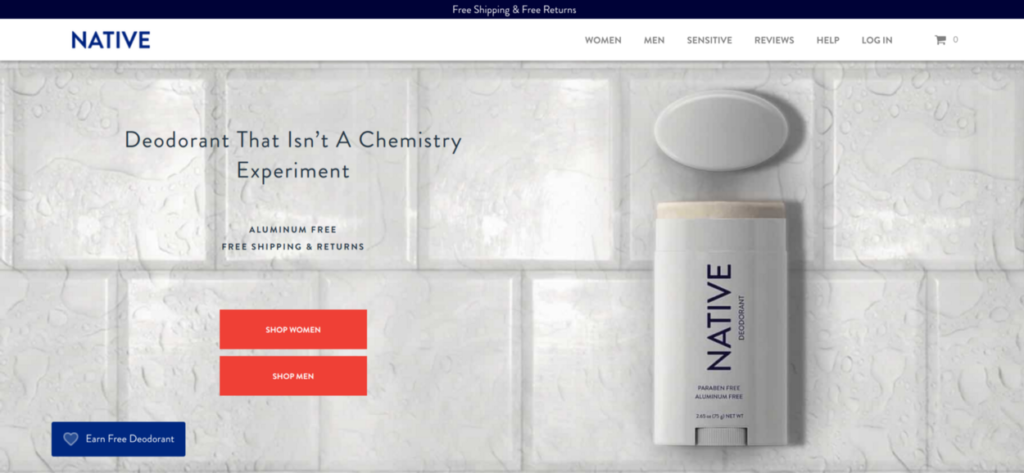
Source: Medium
6. Homepages
Suppose you want to create a seamless experience for your website visitors.
In that case, you must write engaging, emotionally charged, and conversational homepage copy by leveraging the right words to connect with and appeal to your target audience.
For example, look at Tammi Metzler’s homepage, owner of The Write Associate, a book coach, and an author.
Her homepage copywriting style is too engaging with a lot of emotional appeal and persuasive tone that can drag potential customers to her website easily:

Source: YourChicGeek
7. Press Releases
There’s no denying that press releases are an integral part of corporate communications, and writing a press release copy is a daunting task.
As a copywriter, you should understand that organizations use press releases to promote their products and services, but they are not advertisements.
An ideal press release must have a newsworthy headline, written in the third person, crisp, and engaging.
For instance, look at Catbrella Inc.’s press release with all the attributes of a perfect press release.
It has an irresistible headline, broken down into proper segments for boosting readability. It also provides information on the subject, and offers a tempting quote:

Source: HubSpot
How to Become a Copywriter?
A copywriter is paid to write compelling copy or words that prompt immediate action. Although you don’t need any formal education to get started as a copywriter having a bachelor’s degree in journalism, mass communication can be a bonus.
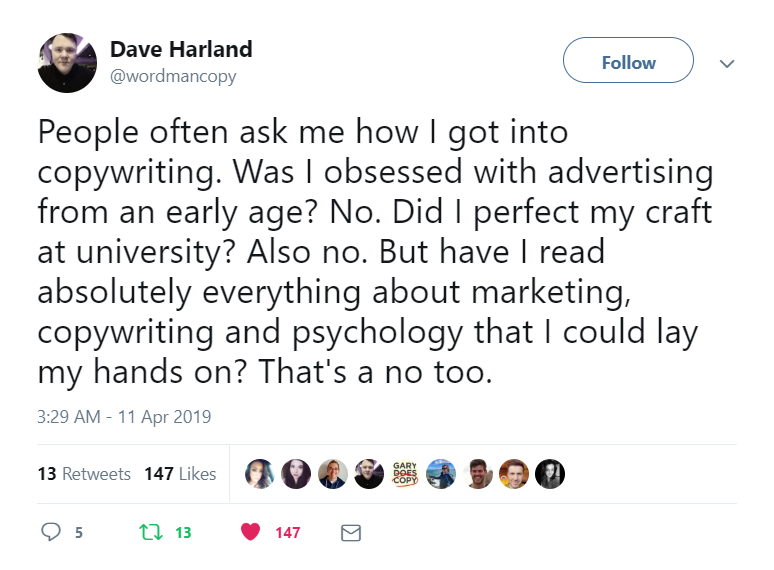
Source: JacobMcMillan
Most copywriters work remotely. Opting for copywriting as a freelance career is a popular option these days.
You can work as a staff copywriter at an agency or be a part of an in-house marketing team.
To become a copywriter, you must learn the fundamentals of persuasive writing and necessary copywriting skills.
Define your copy niche to identify the specific area and audience that you will be targeting as a copywriter.
It would help if you found clients by being active on job and gig sites like Upwork and post about your skills on Facebook, LinkedIn, Twitter, etc., where potential clients can discover you.
Plus, it would help if you created an engaging copywriting portfolio for yourself that you can share with potential employers.
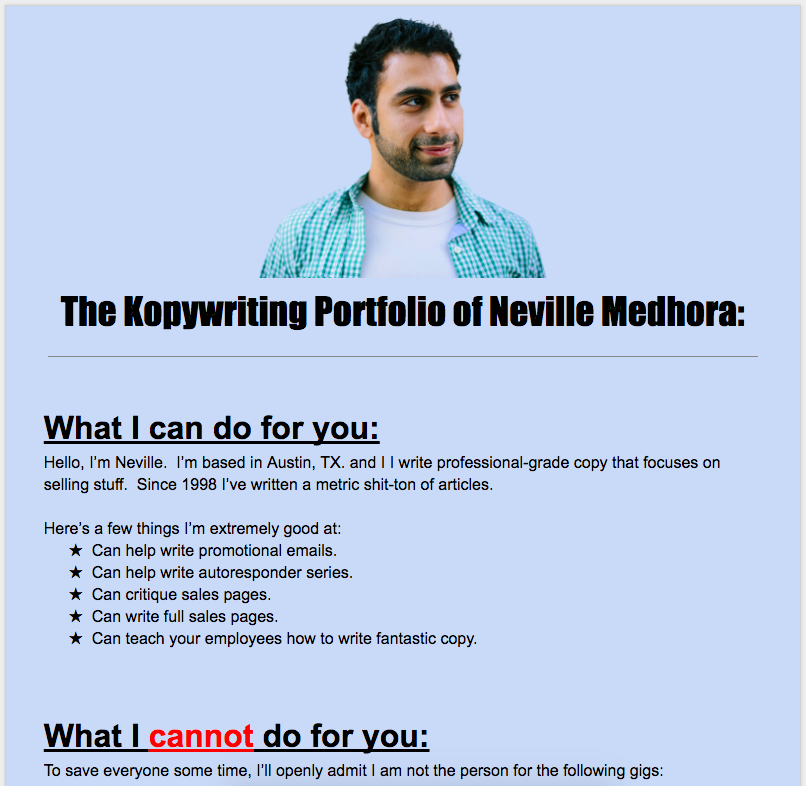
Source: Medium
Read some copywriting books that can help you land some of your first gigs, and once your network is built, you can put efforts into maintaining a consistent leads inflow.
What is Content Writing?
“Content is the reason search began in the first place.” – Lee Odden (B2B Marketing Expert)
The primary task of a content writer is to inform, educate, and entertain the target audience. Content writing is all about creating productive relationships with the readers, so they start trusting your brand and show interest in buying your product and services.

Source: Brafton
Blogs, social media posts, eBooks, newsletters, white papers, etc., are necessary content writing materials.
An expert content writer has advanced SEO knowledge and contributes to the long-term marketing goals of an organization.
These professionals are experts in writing numerous blogs and other types of content without directly mentioning a brand and still manage to grab the attention of potential leads and convert them into paying customers.
What Goes Into Content Writing?
It’s not easy to explain what makes great content in limited words, and there’s no secret sauce to writing high-quality content as it depends on individuals and their creativity.
However, here are a couple of proven tips that can help you churn engaging and informative content for grabbing customers:
a. A compelling and crisp headline.
b. Producing well-researched content.
c. Writing in a unique voice.
d. Editing the content precisely.
e. Creating a hook in your content to grab audiences’ attention.
4 Types of Content that Should Be in Your Content Marketing
1. Blog Posts
Blogging is all about storytelling, and an engaging blog is informative and straightforward.
While writing blogs, you must remember that they should resonate with your target audience and attract them to read further.
Here’s an example of a fantastic UK frugal blog targeting young mothers and helping them with money-saving tips:

Source: Make A Website Hub
The best performing blog posts are long-form i.e 2,000+ word posts as search engines rank them higher and they get more shares. This helps drive organic traffic. It takes practice to get good at creating long-form content.
2. Case Studies
A case study is a detailed story or a thought leadership content showcasing one of your company’s achievements.
Writing a compelling case study is one of the best content strategies for demonstrating your marketing skills.
Look at the Host Analytics case study.
When they noticed that their marketing efforts were generating numerous low-quality leads, and they leveraged an automated email marketing approach from LeadGnome for nurturing and qualifying potential high-quality leads through email marketing:

Source: LeadGnome
3. White Papers
White papers are potent tools for content writers as they help position companies as thought leaders by presenting useful and well-researched information about their offerings.
Writing white papers needs a cautious approach and advanced writing skills as the primary objectives are to engage the readers, generate leads, and impress clients.
White papers must be well-structured, properly written, and personalized to suit different readers’ specific requirements.
Here’s an example of a unique white paper titled – What Developers Want by CodinGame loaded with interactive data to provide the readers with a fun and seamless experience:

Source: Foleon
4. Social Media Posts
Social media channels are evolving consistently, making it even tedious for content writers to create highly engaging social media posts.
While writing for social media platforms, a content writer must keep the following pointers in mind:
a. Do proper research of the target audience.
b. Add a strong CTA in the content
c. Keep it short and simple
d. Use images and videos wisely
e. Develop a unique voice for your content
f. Sound positive and amiable
For example, Taboola’s social media post is quite creative, and the copy is direct, easy to read, and straightforward.
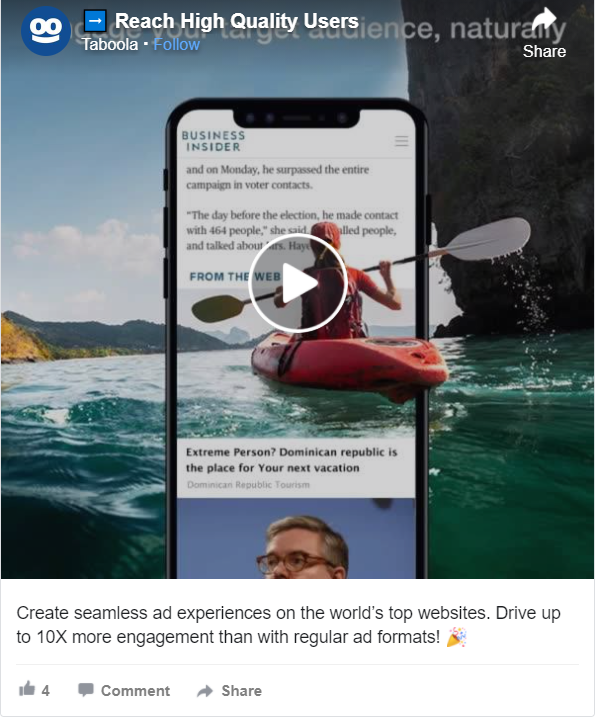
Source: Sculpt
Also, they’ve highlighted the value of their offering with both the creative and the copy:
These are only 4 different types of writing. There are scores of other types of content that you can include in your marketing strategy. And there are also other types of valuable content like podcasts and webinars that are in audio and video forms.
How to Become a Content Writer?
The best aspect of entering into the content writer field is that you don’t need any specific qualification, and there are no defined paths that help you get started with the content writing career.
But if you are a media or communications graduate, there’s always an advantage that lies ahead.
You can take up content writing as a career at any stage of your professional journey and in any capacity. This could be as a freelancer or, part-time, or full-time.
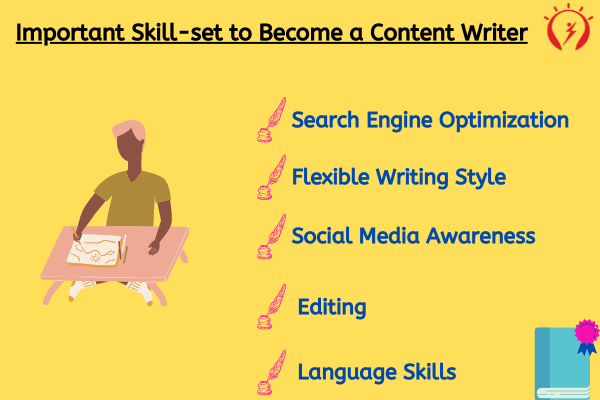
Source: Jioforme
To excel in the content writing niche, you need impeccable writing, editing, creativity, and imaginative skills.
For becoming a successful content writer, you must read relevant books that can help you understand the basics.
Plus, you must do some courses or internships to polish your writing expertise and participate in freelance projects.
You should attend content writing workshops and seminars to boost your relevance in the market. Maintain a strong social media presence on Twitter, LinkedIn, and Facebook for grabbing more eyeballs to your content!
Copywriting vs Content Writing: What Do You Prefer?
After exploring both copywriting and content writing in detail, it’s evident that both are different and cater to different objectives.
On the one hand, copywriting is direct and driven towards advertising results.
Content writing, on the other, is more creative and focused on providing the readers with some meaningful information.
Ideally, you must have the best of both worlds: copywriting and content writing.
The objective should be to produce authoritative, informative, and engaging content with crisp and robust CTAs for grabbing more customers and boosting conversions for your business!